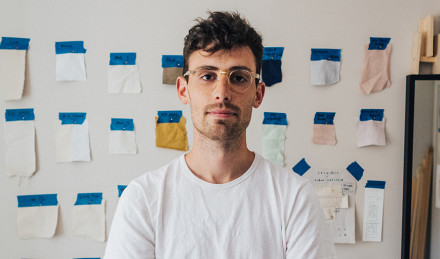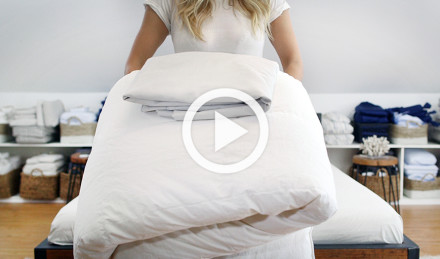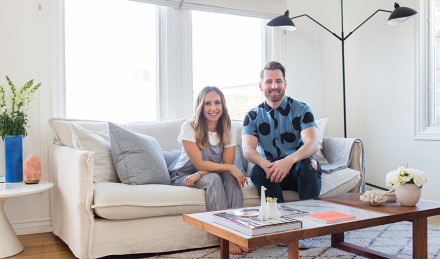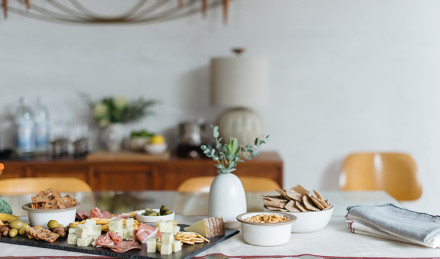Form meets function in our latest collaboration with Tappan artist, Ethan Caflisch. Represented by the art collective since January 2018, Ethan is an Oakland based artist whose practice focuses on material, process and form. We visited him in his Bay Area studio to see first-hand how he used our linen bedding to create the exclusive limited edition, “Spending the Night in a Different Bed (Venice, California),” series...
How would you describe your work for Tappan?
Tappan has a handful of different series I’ve been working on, but the biggest thing that stands out is color. It’s taken me quite a while to get comfortable working with color again, but my time with the gallery has only increased my confidence and exploration.
How would you describe your work for Tappan?
Tappan has a handful of different series I’ve been working on, but the biggest thing that stands out is color. It’s taken me quite a while to get comfortable working with color again, but my time with the gallery has only increased my confidence and exploration.
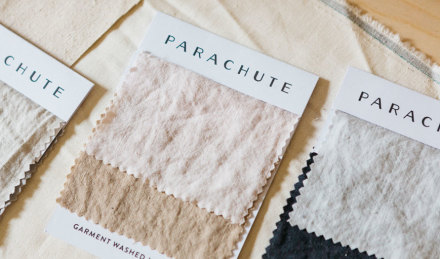
How did the Tappan for Parachute collaboration come together? How did you approach the design process?
There was a clear synergy between my work and Parachute’s. We both work with textiles and care about material, place and space – it was an obvious pairing that made the design process nearly seamless.
From there I met with the design team at Parachute and we nerded out on materials. Linen became the obvious choice after seeing their fabrics first-hand and studying how each material looked, felt, moved and explored light. Once the medium was chosen, I began designing the prints on the computer where I made a solid rendering. The final step was sewing together the editions and mounting them onto cotton paper – and voila.

How did the Tappan for Parachute collaboration come together? How did you approach the design process?
There was a clear synergy between my work and Parachute’s. We both work with textiles and care about material, place and space – it was an obvious pairing that made the design process nearly seamless.
From there I met with the design team at Parachute and we nerded out on materials. Linen became the obvious choice after seeing their fabrics first-hand and studying how each material looked, felt, moved and explored light. Once the medium was chosen, I began designing the prints on the computer where I made a solid rendering. The final step was sewing together the editions and mounting them onto cotton paper – and voila.
What makes the Tappan for Parachute editions unique? How are these pieces different from others you’ve made in the past?
I’ve made print editions, but never an edition of individual prints. Each piece is made of Parachute linen and individually sewn.
What makes the Tappan for Parachute editions unique? How are these pieces different from others you’ve made in the past?
I’ve made print editions, but never an edition of individual prints. Each piece is made of Parachute linen and individually sewn.
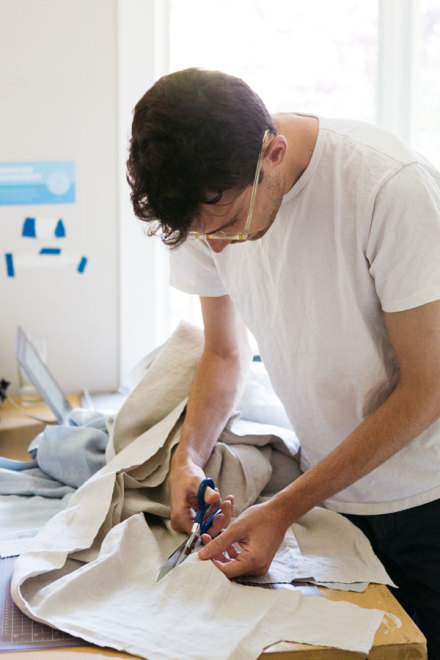
Your artist statement focuses on material, process and form. How is that represented in these works of art?
Those are the three foundational pillars to my studio practice. I see things mathematically, so thinking about those pillars as variables – or parts of a venn diagram – is how my brain operates in the studio.
When approaching this project, those pillars become apparent in how I use and display the material. The form is meant to show the beauty of Parachute’s signature material, linen, while referencing and borrowing the process of handmade-generational quilts. For the viewer, it’s really a competition as to what you’re attracted to first: the form or the material. The process will require another step forward to see that it was machine sewn and mounted by hand with thread onto the paper.

Your artist statement focuses on material, process and form. How is that represented in these works of art?
Those are the three foundational pillars to my studio practice. I see things mathematically, so thinking about those pillars as variables – or parts of a venn diagram – is how my brain operates in the studio.
When approaching this project, those pillars become apparent in how I use and display the material. The form is meant to show the beauty of Parachute’s signature material, linen, while referencing and borrowing the process of handmade-generational quilts. For the viewer, it’s really a competition as to what you’re attracted to first: the form or the material. The process will require another step forward to see that it was machine sewn and mounted by hand with thread onto the paper.
Where do you source inspiration? Explain your creative process.
Simply put: I have an innate desire to rearrange, pare down and make anew.
Where do you source inspiration? Explain your creative process.
Simply put: I have an innate desire to rearrange, pare down and make anew.
Your work consists of different raw materials – including linen. How do you select your chosen mediums?
I trust my gut. It’s similar to hearing a great song – you know right away that you love it. I’m fortunate that my personal taste is exactly the work I’m making.
Your work consists of different raw materials – including linen. How do you select your chosen mediums?
I trust my gut. It’s similar to hearing a great song – you know right away that you love it. I’m fortunate that my personal taste is exactly the work I’m making.
What do you love about creating?
The struggle in making things work.
What do you love about creating?
The struggle in making things work.
Tell us about your professional background. When did your career meet Tappan?
The timing was pretty perfect. After finishing art school I spent about two years hustling in a few different atmospheres: film, gallery, assisting other artists all while creating my own works. I eventually reached a point where I was staying afloat and making work full-time and that’s right about when Tappan and I started ‘dating’.
Tell us about your professional background. When did your career meet Tappan?
The timing was pretty perfect. After finishing art school I spent about two years hustling in a few different atmospheres: film, gallery, assisting other artists all while creating my own works. I eventually reached a point where I was staying afloat and making work full-time and that’s right about when Tappan and I started ‘dating’.
How has the Bay influenced your design aesthetic?
That’s a tough one, but I definitely believe that environmental influence is huge in my work. My most fond thoughts about the Bay Area revolve around the food culture; I’m sure you could find some parallel between slow-food and my work but we don't need to go there.
How has the Bay influenced your design aesthetic?
That’s a tough one, but I definitely believe that environmental influence is huge in my work. My most fond thoughts about the Bay Area revolve around the food culture; I’m sure you could find some parallel between slow-food and my work but we don't need to go there.
Any tips for other artists?
Make the things you like – you’ll be surprised at the support you’ll receive.
Any tips for other artists?
Make the things you like – you’ll be surprised at the support you’ll receive.
